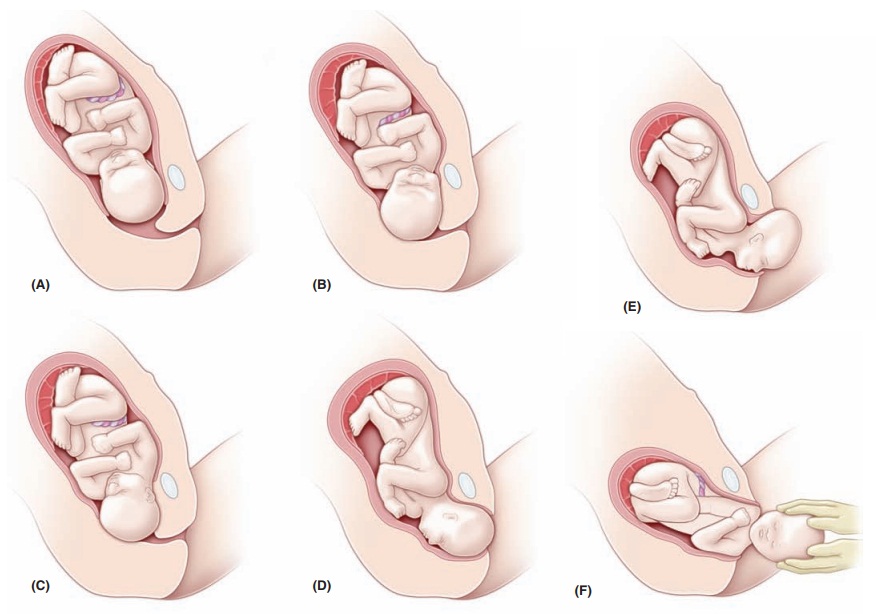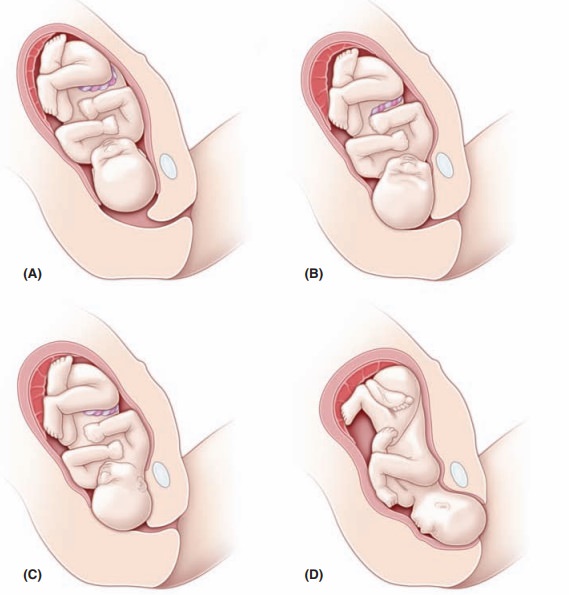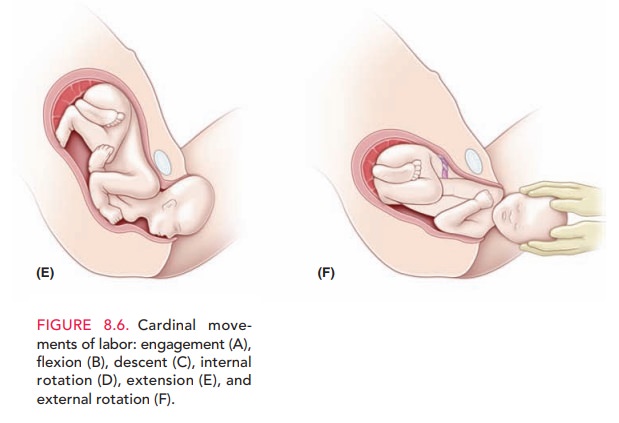Chapter: Obstetrics and Gynecology: Intrapartum Care
Mechanism of Labor

MECHANISM OF LABOR
The mechanisms of labor (also known as the cardinalmovements of labor [Fig. 8.6]) refer to the changes of
theposition of the fetus as it passes through the birth canal. The fetus
usually descends to where the occipital portion of the fetal head is the
lowermost part in the pelvis, and it rotates toward the largest pelvic segment.
Because vertex presentation
To accommodate to thematernal
bony pelvis, the fetal head must undergo several movements as it passes through
the birth canal. These movements are accomplished by means of the forceful
con-tractions of the uterus. These cardinal movements of labor do not occur as
a distinct series of movements, but rather as a group of movements that overlap
as the fetus accommo-dates and moves progressively through the birth canal.
These movements are
·
Engagement
·
Flexion
·
Descent
·
Internal rotation
·
Extension
·
External rotation or restitution
·
Expulsion


Engagement
is defined as descent of the biparietaldiameter of
the head below the plane of the pelvic inlet, sug-gested clinically by
palpation of the presenting part below
Engagement com-monly occurs days to weeks prior to labor in women who
have not delivered a child, whereas in women who have had children it more
commonly happens at the onset of active labor. In any event, the importance of
this event is that it suggests that the bony pelvis is adequate to allow
significant descent of the fetal head, although the extension of this to the
idea that delivery through the pelvis will happen in the labor does not follow.
Flexion of the fetal head allows for
the smaller diameters of the fetal head to present to the maternal pelvis. Descent of the presenting part is
necessary for the successful completion of passage through the birth canal. The greatest rate of descent occurs during
the latter portionsof the first stage of labor and during the second stage of
labor. Internal rotation, like
flexion, facilitates presentation of theoptimal diameters of the fetal head to
the bony pelvis, most commonly from transverse to either anterior or posterior.
Extension of the fetal head occurs
as it reaches the introi-tus. To accommodate the upward curve of the birth
canal, the flexed head now extends. External
rotation occurs after delivery of the head as the head rotates to “face
forward” rel-ative to its shoulders. This is known as restitution, followed
rapidly by delivery of the body, expulsion.
Related Topics